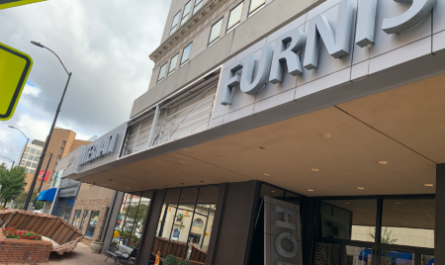COLFAX, N.C. — At a recent presentation titled Recalls & Enforcement Under the New CPSC, Asha Allam, with Washington-based Cooley LLC, outlined what furniture makers, retailers and distributors need to know about today’s heightened regulatory climate.
Her presentation during the American Home Furnishings Alliance 2025 Regulatory Summit last week emphasized that the Consumer Product Safety Commission is taking a far more aggressive stance on recalls and enforcement than in years past.
Allam explained that the CPSC has jurisdiction over nearly all tangible consumer products — furniture included — with the exception of food, drugs, cosmetics, alcohol, tobacco and firearms, which are handled by other agencies. Recalls generally fall into two categories. The first covers products subject to mandatory standards, such as the STURDY Act governing clothing storage units. These recalls are objective: Products are tested against clear performance criteria, and the results determine compliance.
The second, and often more complicated, category involves products deemed “defective.” Here, Allam noted, the CPSC can act even when no specific standard has been violated. A defect may stem from design, manufacturing, labeling or warnings — or, in some cases, simply from the product failing to perform as intended. What makes this process challenging for businesses is that the CPSC’s analysis is largely subjective, relying heavily on incident reports, near misses or injury data. “The agency doesn’t need a root cause to push for a recall,” Allam said. “If a product poses a substantial risk of injury — even if it’s operating as designed — that’s enough to trigger action.”

Allam described how the agency has restructured in recent years. Traditional compliance officers still oversee regulated products, but the more aggressive defect investigations are now led by attorneys in the Division of Enforcement and Litigation. This group builds legal cases when hazards are identified, and companies that don’t cooperate risk losing control of the narrative as the CPSC issues unilateral warnings.
For the furniture industry, Allam stressed that recalls are not handled broadly across categories but rather on a product-by-product basis, sometimes down to the model level. That makes vigilance critical at every stage of the product lifecycle, including packaging and distribution. Seemingly small failures, such as a chair developing fractures after rough handling in transit, can snowball into costly recalls if they can’t be traced or contained.
An effective recall, Allam said, has two essential components: broad public notice and a meaningful consumer remedy. Notice now extends across every channel companies use for sales — including social media, search optimization and paid advertising. “If you marketed your product online, the CPSC expects you to use those same tools to announce the recall,” she said.
As for remedies, the agency’s focus is not on consumer compensation but on removing unsafe products from circulation. Increasingly, refunds or replacements are contingent on consumers destroying the product and providing proof. Allam pointed to litigation involving Amazon, where the debate centered on whether refunds should require proof of destruction. “The point isn’t to make the consumer whole financially,” she explained. “It’s to get dangerous products out of homes, warehouses and resale channels.”
Reverse logistics and quarantine measures are another area where companies stumble. Recalled products must be pulled from retailers, distributors and warehouses quickly and effectively. If they reenter commerce — even inadvertently — civil penalties can result. Allam advised that companies prepare detailed reverse logistics plans, including electronic quarantines (such as altering SKUs to prevent resale) and strict physical separation of recalled inventory.
Recall administration also demands planning. Companies must establish toll-free numbers, websites and trained customer service teams to handle inquiries. Poor consumer experiences can backfire if complaints pile up at the CPSC, which closely monitors recall effectiveness. Progress reports — covering website hits, social media reach and remedies issued — are required monthly. While burdensome, Allam noted these reports also help companies demonstrate due diligence and eventually close their recall files.
The stakes are significant. Allam pointed to recent recalls of furniture tip-over hazards involving only a few hundred units, underscoring that the CPSC is no longer prioritizing only large-scale risks. Instead, enforcement is accelerating, with more unilateral warnings, more small-batch recalls and greater use of import detentions when paperwork or compliance records are incomplete.
She also highlighted the self-reporting obligations shared by manufacturers, importers, distributors and retailers. Any indication that a product may be hazardous — whether from customer complaints, warranty claims, lawsuits or insurance reports — must be reported unless the company knows another party has already done so. Failure to report can lead to multi-million-dollar civil penalties, and in rare cases, criminal investigations. “The agency’s posture is simple,” Allam said. “When in doubt, report. Disclosure doesn’t always mean a recall. Failing to disclose almost always leads to trouble.”
Looking ahead, Allam warned that CPSC enforcement will remain aggressive in 2025 and beyond. Shorter deadlines, stricter reporting expectations and lower tolerance for delays are the new norm. For furniture companies, that means investing now in compliance systems, testing protocols and recall preparedness. “Have your ducks in a row,” Allam concluded. “Because enforcement is here to stay, it’s better to show your products are safe than to wait for the CPSC to prove they’re not.”

 by
by 


